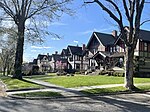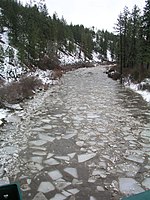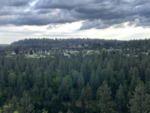Sunset Boulevard Bridge

The Sunset Boulevard Bridge, also known as the Latah Creek Bridge, is a deck arch bridge in the northwestern United States that spans Latah Creek in Spokane, Washington. The bridge connects the neighborhoods of Browne's Addition on the east, and Downtown Spokane just beyond that, with West Hills to the west. Latah Creek, which passes under the bridge, separates the two neighborhoods. It was built 112 years ago in 1911 by the city of Spokane, and was designed by Morton McCartney & J.F. Cunningham, with J.F. Greene serving as the construction engineer.It is the northernmost of three bridges which cross Latah Creek in its immediate area. High Bridge is located to the south, and carries a BNSF railroad. Interstate 90 crosses Latah Creek just to the north of the rail bridge. All three pass over High Bridge Park, which takes its name from the bridges.
Excerpt from the Wikipedia article Sunset Boulevard Bridge (License: CC BY-SA 3.0, Authors, Images).Sunset Boulevard Bridge
West Sunset Boulevard, Spokane
Geographical coordinates (GPS) Address Nearby Places Show on map
Geographical coordinates (GPS)
| Latitude | Longitude |
|---|---|
| N 47.65 ° | E -117.448 ° |
Address
West Sunset Boulevard 2490
99224 Spokane
Washington, United States
Open on Google Maps











